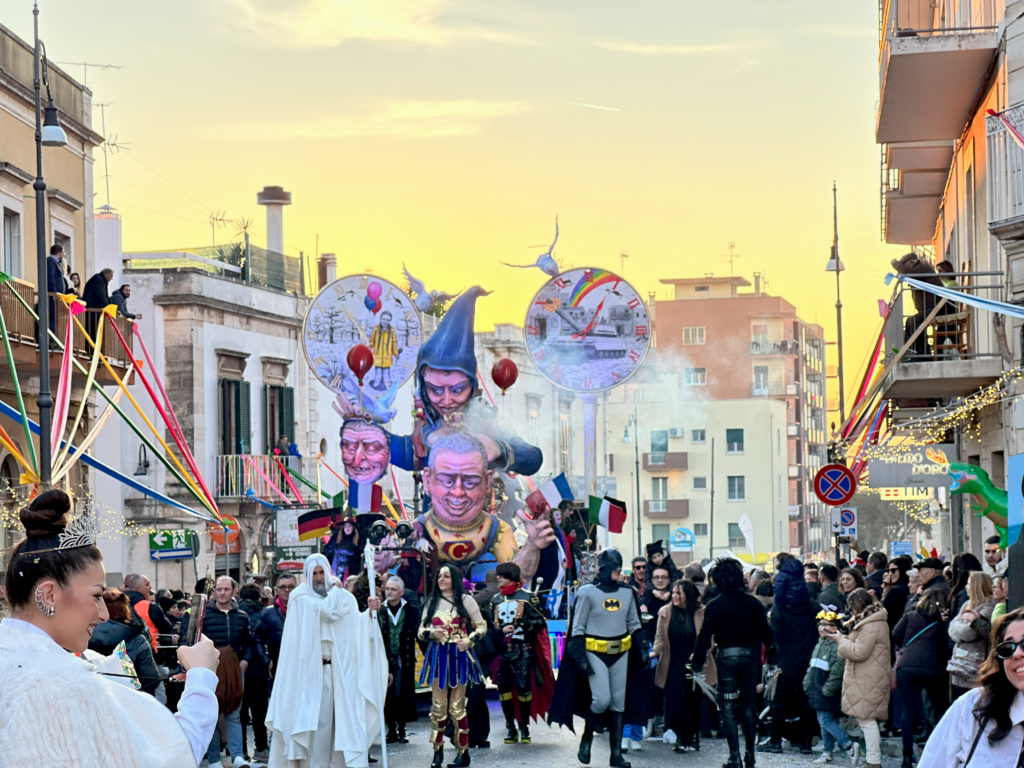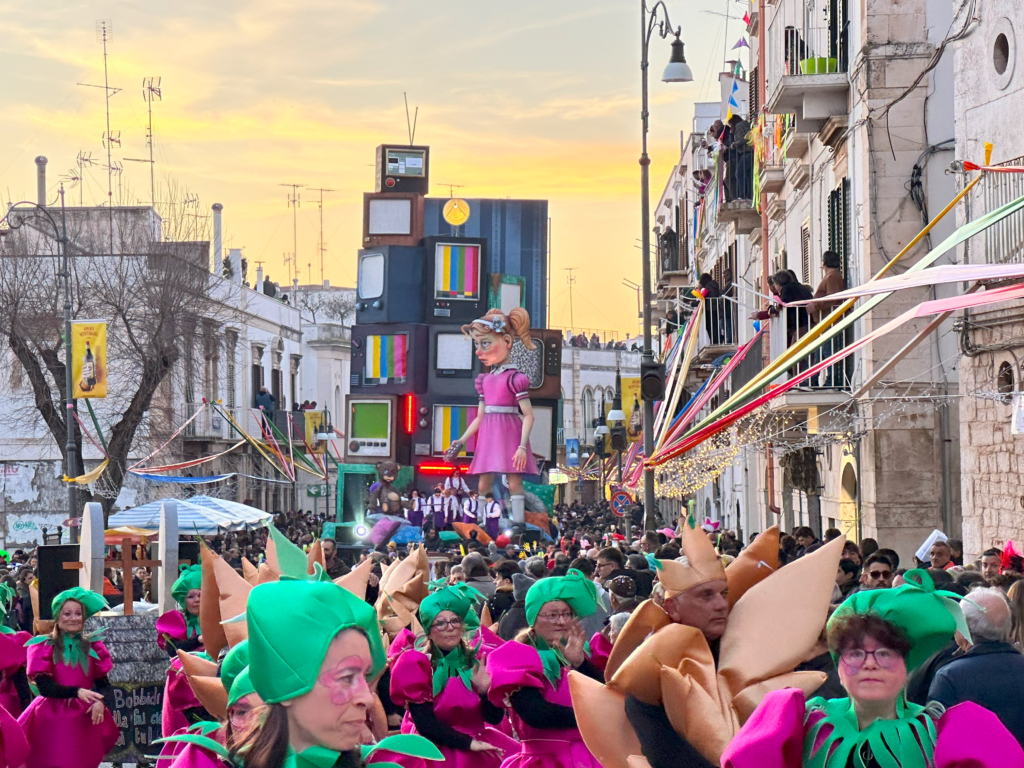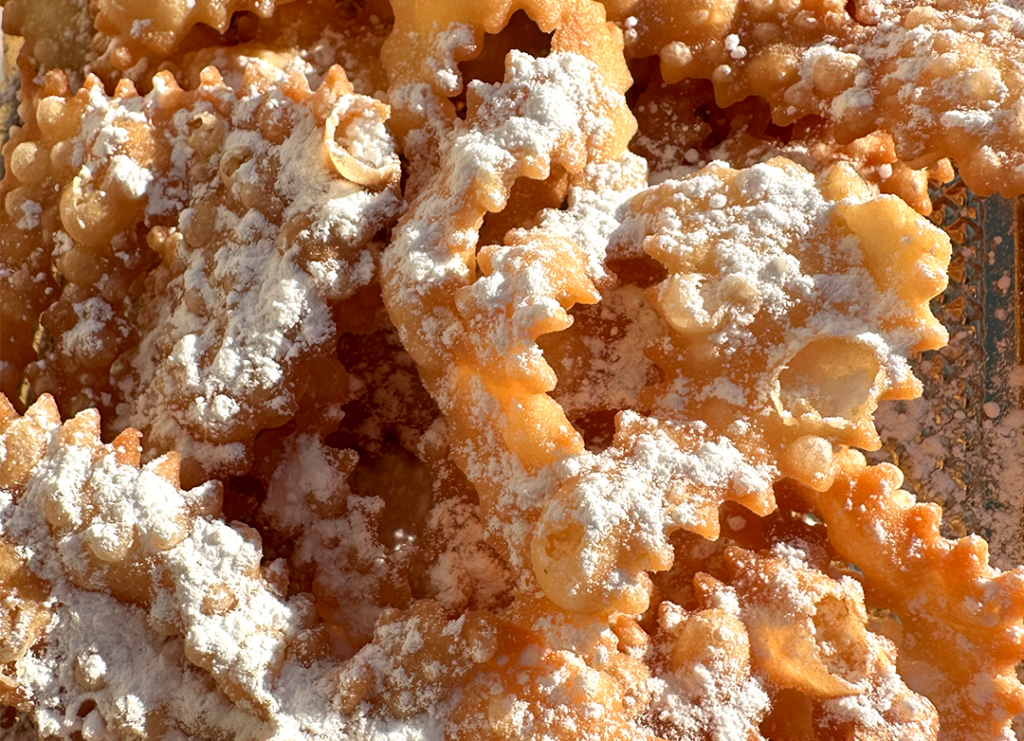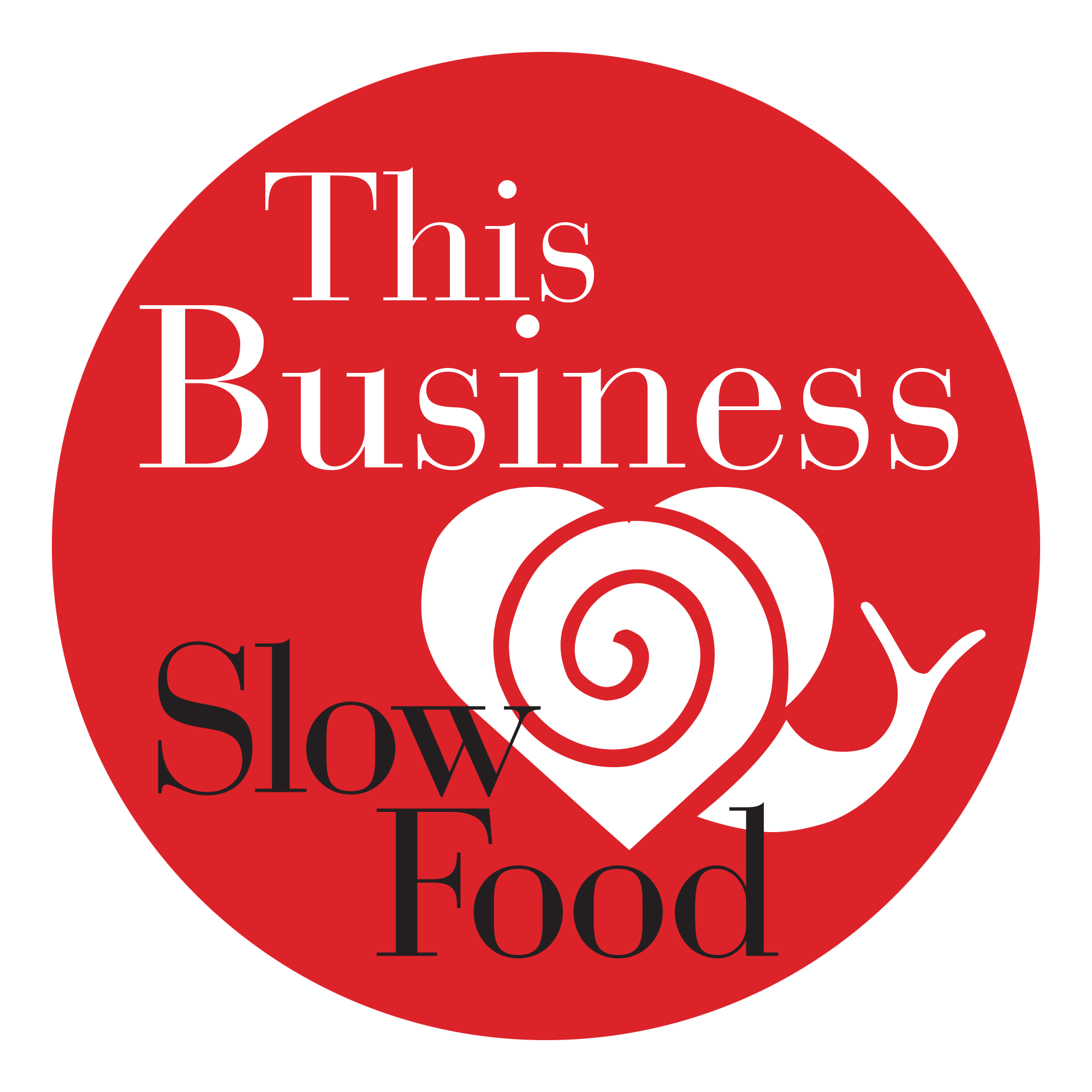If you are looking for a different, fun and colorful celebration between Christmas and Easter, you can’t miss the Carnival! This is one of the most loved and cheerful celebrations in Italy – a time of masks, costumes, parades… and delicious food, of course! Do you know the roots of this ancient tradition? In this article, we’ll guide you through its history, how Italians celebrate it, and the delightful treats traditionally eaten during this period.

The origins of Carnival and celebrations in Italy
The word Carnival comes from the Latin carnem levare, which means “to remove meat”. This refers to the period of festivities before Lent, the 40 days of fasting and penance leading to Easter in the Christian tradition. However, its origins can be traced back to ancient festivals like the Roman Saturnalia or the Greek Dionysia, which celebrated the end of winter and the arrival of spring.
In Italy today, Carnival is a time of lively celebrations that bring streets to life. You’ll see parades of floats and masked groups, kids wearing colorful costumes of their favorite characters, people throwing confetti and streamers, etc. Some of the most famous and spectacular carnivals in Italy are the ones of Venice, Viareggio, and Ivrea, but there are many other smaller and lesser-known ones that are equally charming.
Carnival week traditionally starts on Fat Thursday and ends on “Mardi Gras” or “Fat Tuesday”, which falls on February 13th in 2024.
The magic of Putignano, one of the oldest carnivals in Italy!
Puglia has a rich and varied carnival tradition. One of the oldest and most famous festivals is the carnival of Putignano, a town in the province of Bari. This carnival dates back to the 14th Century, with the 2024 edition marking an impressive 630th years of celebration!
Putignano’s festival is famous for its satirical and humorous floats made of papier-mâché, playfully mocking politicians, celebrities, and the events of the year. The floats are crafted by local artisans, who compete for the best design. The parade of floats is accompanied by masked groups, music and dances, creating a colorful and lively spectacle for everyone to enjoy!

On Fat Tuesday, the final day of the carnival, people engage in the Funeral of the Pig, a tradition where a papier-mâché pig is roasted as the last feast before Lent.
Food delights of Carnival
No Carnival is complete without the taste of the typical sweets that are prepared during this festive season. Some of the most common sweets are the chiacchiere, also known as frappe, bugie, crostoli or cenci. They are thin strips of dough fried in oil and sprinkled with powdered sugar.

Another popular carnival sweet are the castagnole, small balls of dough fried in oil and coated with sugar, sometimes flavored with liqueur or lemon zest.
Among the delightful carnival treats in Puglia are tenerelli, a kind of “confetti” with a soft and tender heart. They are made with almonds or hazelnuts, covered with dark or white chocolate and a layer of sugar. Originating from the town of Andria, tenerelli were historically exchanged as gifts between lovers on Valentine’s Day. In the past, they were also part of some rituals where they were tossed like confetti.
Carnival is a time of joy and fun. If you want to experience its festive atmosphere and traditions, Puglia is the place to be. Immerse yourself in the spirit of carnival and join the locals in their colorful celebrations. Buon carnevale!

